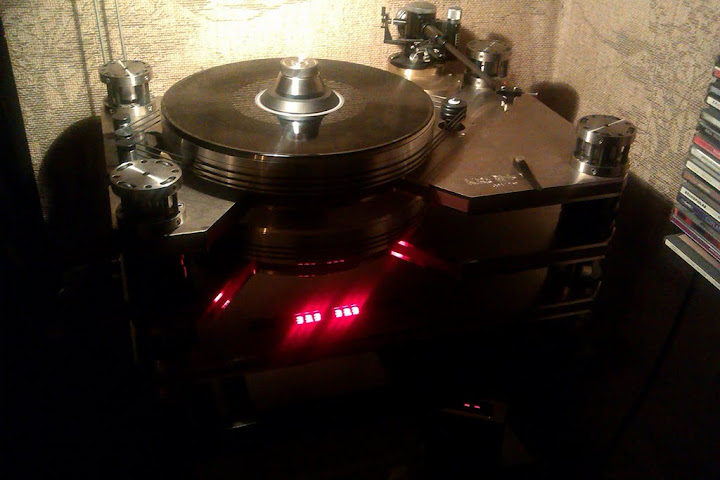Marc, If I understand you correctly, you acknowledge the importance of the turntable to the overall analog system, but contend that what we are really hearing is the contribution of the tonearm and cartridge rather than the turntable itself. Is that correct?
Not exactly what I meant. Let me say it in another way which should be easier to interpret as I intended:
Given a minimum level of performance of the turntable, the arm and cartridge are potentially responsible for far more DISTORTION than is the turntable. An improvement in the performance of the arm or cartridge has a bigger effect on the overall reproduction accuracy of the system
For further insight and the reasoning behind this statement, take a look at
http://swedishat.com/articles.html
If that were correct, then additional isolation devices wouldn't matter....but they do IME. I have no doubt in that regard. Turntable's do impart their own sound character in addition to the arm/cart. The arm/cart can even perform better on said turntable when proper isolation devices are implemented.
To properly isolate the turntable from ground-borne disturbances is very important, as you very well say, Christian. Having said that, isolation devices do not change the
intrinsic quality and performance of the turntable itself; if you want, a given turntable is equally performant by design, with or without an additional isolation device. As a system, though, the turntable can yield better performance when properly paired with the isolation device.
This doesn't change the validity of my previous statement. I have never claimed the turntable doesn't have a fundamental role, to the contrary; my claim is that at a certain level of performance, the limitations of the arm and cartridge are far bigger than those of the turntable. It is a matter of physics and engineering.
Very Interesting thread and comments--especially from the SAT designer--here is the late Ken Shindo's take on the role of the Plinth in his design--any doubters speak forth
BD
" It has been said that idler wheel turntables easily cause rumble, but the problem lies in the plinth rather than the motor itself. Our plinth is made of solid laminated cherry wood designed to deaden outer vibrations. Unlike conventional plinths, this plinth allows only minimum space for the motor
and arm base. The construction of the plinth virtually demolishes any vibrations caused by the motor but not by deadening the overall sound, which often happens with other plinths that are also designed to eliminate vibrations caused by the motor vibration. Once I designed a plinth that killed
vibrations without killing the life of the table, I stopped experimenting and have been making this plinth ever since.
The plinth is the key." - Shindo
Bruce, this observation is the complementary of my note on ground-borne disturbances, thanks! Big plinths with big exposed surfaces are subjected to higher loads from the air pressure in the room while playing music. These loads cause deformations of the plinth and accelerations of the bearing and arm attached to the plinth. This induces distortion.
Turntables with this kind of plinths are more sensitive to the sound pressure levels in the room than other designs with much more limited surface exposure and compact design, like for example the Onedof, Brinkmann Lagrange or Kondo Ginga, to give you an idea.





